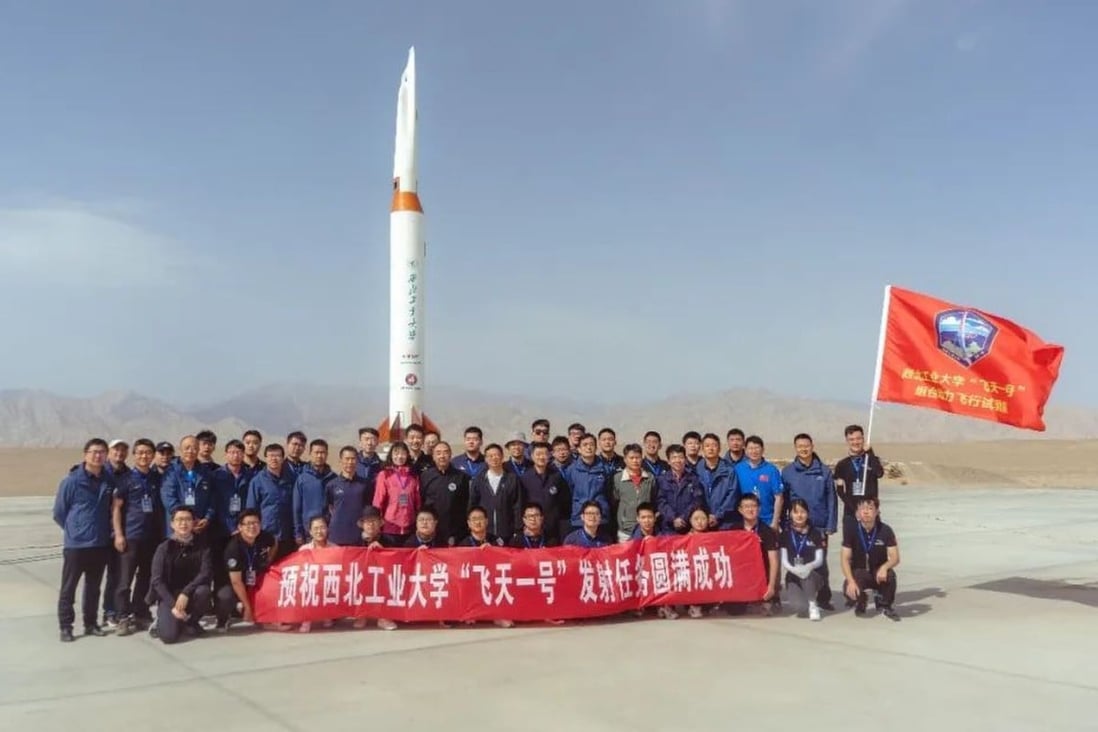Chinese University Blacklisted By US Claims Success of Hypersonic Test Flight

Flying Hypersonic
In December 2021, China announced that it was working on a hypersonic aircraft that could carry ten passengers anywhere in the world in under an hour.
At the time, it was revealed that the 148-foot (45-meter) long aircraft, about a third the size of a Boeing 737, had delta wings identical to those of the Concorde, the first supersonic passenger aircraft in history, but with tip pointing upwards.
China hopes to plunge itself into the future with an “air-breathing” magnetic liquid motor that can make it commercial possible to walk anywhere on earth in under an hour.
It has therefore made a coordinated effort to produce an operationally hypersonic aircraft for civilian use despite being consistently criticized by its Western peers. However, the university’s latest demands may prove to be a breakthrough for its viability.
Feitian-1 was developed by a research team at North-Western Polytechnic University in Xian
According to the research team that developed the Feitian-1, the vertically fired vehicle could run at different speeds while maintaining high combustion efficiency. This required various engines to turn on and off at several points during the flight smoothly and steadily, a technical challenge that hypersonic programs around the world face.
The university further stated that the rocket and air breathing engines combined to create the greatest lift during the initial phases of the flight. The rocket stopped after it broke the sound barrier. The air-breathing engines may use atmospheric oxygen to fly longer with the same mass of fuel as the rocket.
However, the process was not primarily a problem for the team. As the speed approached Mach 4, the air-breathing engines experienced a choking problem, necessitating a switch that allowed an appropriate mix of fuel and extreme high-speed airflow to propel the aircraft to a higher speed.
Petroleum made switching between engine modes and starting the engine more challenging because it was less active and more stable than other energy sources such as hydrogen. The latest test flight was “a breakthrough in some critical technologies, such as thermal flow adjustment and high-efficiency combustion over a super wide speed range,” the university said.
Above Mach 6, the efficiency of a ramjet or scramjet begins to decline. Less energy can be taken in the form of pressure when the air temperature in the inlet rises.
In February this year, a Chinese space company called Space Transportation announced plans for a space-based hypersonic aircraft that can reach New York from Beijing in an hour. It had claimed that the “rocket with wings” is expected to fly at an astonishing 7,000 miles per hour, with tests set to begin next year.
Hypersonic aviation technology could usher in a revolution in human transportation, but its uses have so far remained largely in the hands of military users worldwide. The United States, for example, does not even have an operational hypersonic weapon yet.




No comments:
Post a Comment